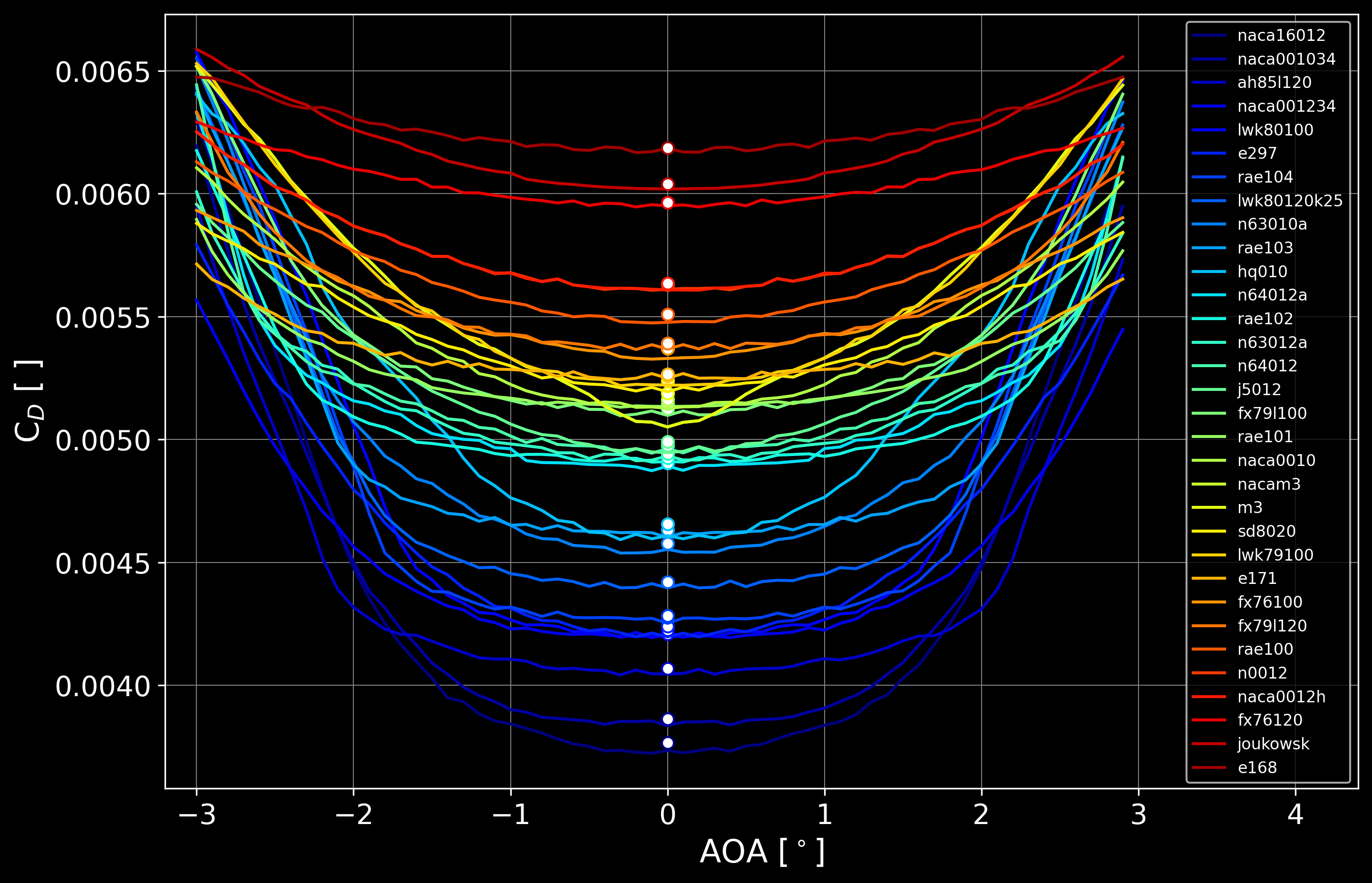There are many great masts out there for hydrofoiling, like the Moses/Sabfoil W85 deep tuttle mast and the new Slingshot ones to name two. But I always had the feeling that it can be done better, this post is the first step in the journey to find out.
When building about anything first we need to fix some parameters. For me those are:
- field of use: windfoiling (~12-45 km/h)
- mast length: 94 cm
- board-mast interconnection: plate
- average cord length: 138 mm
- mast thickness distribution: ~14 mm thickness at the deepest point of the mast. This an emperical value that I decided on based on my experience with masts from other manufacturers (Armstrong's 100 cm mast is 15 mm, Sabfoil uses ~14 mm, Axis' 19 mm aluminum mast is definitely too thick)
Next, an airfoil database like airfoiltools.com can be searched for profiles with 0% camber (symmetrical) and a minimum and maximum thickness. The desired range is 10.0 - 12.5% because I am aiming for ~14 mm thickness at the mast-fuselage interconnection at a cord length of about 120 mm. For a deep tuttle mast that goes flush into the box the limiting factor would be the 16 mm width at the box with a chord length of roughly 156 mm, thus about 10.25%. Alternatively the mast can be constructed similar to the 'Slingshot Ghost Whisperer' deep tuttle windfoil mast that has a plateau like shape before the deep tuttle adapter starts.
The search returns a couple of profiles:
profiles = ['e230','hq010','lwk79100','n63010a','naca0010','naca001034','naca001035','naca001064','naca001065','naca001066','rae100','rae103','rae101','sc20010','rae102','e230','rae104','sd8020','fx79l100','lwk80100','fx76100','n0011sc','e297','joukowsk','nacam3','m3','n64012a','sc20012','s1012','ea61012','fx71120','j5012','naca16012','n64012','naca001264','naca001234','n0012','n63012a','e472','fx76120','ah85l120','fx79l120','lwk80120k25','naca0012h','e171','e168']
Now which is the best? I define maximum rigidity against bending (and torsion but that is secondary) at the lowest drag value as 'the best'.
The deflection of a mast when under load (δ) is directly proportional to the cubed mast length (lₘ) and inversely proportional to Young's modulus (E) and the second moment of area (I) which is solely a function of airfoil geometry.
δ ∝ lₘ³/(3EI)
Young's modulus is defined as stress over strain i.e. change in length over loading applied and can only be increased by using higher modulus carbon in the build. So the higher the modulus the better the mast? Not necessarily. Many companies tout their use of 'ultra high modulus', '12K' but as the modulus of carbon fiber increases the tensile strength reduces. That means that the mast might be super stiff but is more likely to break on a bad impact. More to that in a future post. The second moment of area can be calculated as shown on this Wikipedia page. Basically it is the distance of a finite mast hull shell squared times the area integrated over the whole length of the mast. In my simplification the must hull is infinitely thin. That way I can just integrate the squared distance between the hull and the center line (y=0) over the length of the chord [0,1].
This plot is color coded by second moment of area (dark blue = smallest, dark red = highest). The second moment of area of the best profile is a staggering factor of 1.84 better than the worst, this is a huge improvement!

The coefficient of drag of a profile can be calculated with tools like XFoil, RFoil, openFoam among others. Lift/drag polars calculated by XFoil are available for free on airfoiltools.com. All tools are good but only as good as the experience level of the user. To get reasonable results it's best to compare to literature values and tune the parameters of your simulation tools to fit reality. I score airfoils by the average drag between -1 and 1 degree angle of attach (AOA) which is shown as a circle at AOA = 0 in the figure below. Also here, an impressive factor of 1.67 difference between largest and smallest drag coefficients.

Plotting the second moment of area over the coefficient of drag yields:

So the stiffest mast profile with the least drag (at 45 km/h!) is the NACA16012. The shown plot depends on the Reynolds number and changes quite a lot with velocity, so the ideal selection might be different. Let me know if you need some consulting on the profile selection, if time permits I am happy to help.
Edit 1 (17. July 2022): In the Board & Hydrofoil Building group on Facebook another member 'Sam' suggested to parametrize the airfoil with splines in order to not just find the best profile out of the already available ones on airfoiltools.com but to search the parameter space of the spline(s) for the really best profile. I think that's a great idea and I'll pursue in the research for building mast number 2.